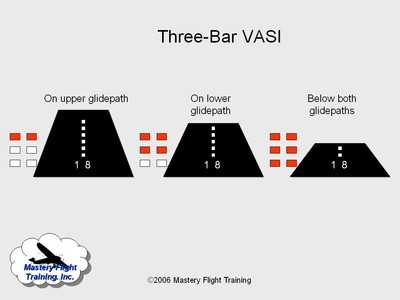Aero-Tips!
A good pilot is always learning -- how many times have you heard
this old standard throughout your flying career? There is no truer
statement in all of flying (well, with the possible exception of
"there are no old, bold pilots.") It's part of what makes aviation
so exciting for all of us... just when you think you've seen it
all, along comes a scenario you've never imagined.

Aero-News has called upon the expertise of Thomas P. Turner,
master CFI and all-around-good-guy, to bring our readers -- and us
-- daily tips to improve our skills as aviators, and as
representatives of the flying community. Some of them, you may have
heard before... but for each of us, there will also be something we
might never have considered before, or something that didn't
"stick" the way it should have the first time we memorized it for
the practical test.
It is our unabashed goal that "Aero-Tips" will help our readers
become better, safer pilots -- as well as introducing our
ground-bound readers to the concepts and principles that keep those
strange aluminum-and-composite contraptions in the air... and allow
them to soar magnificently through it.
Look for our daily Aero-Tips segments, coming each day to you
through the Aero-News Network. Suggestions for future Aero-Tips are
always welcome, as are additions or discussion of each day's tips.
Remember... when it comes to being better pilots, we're all in this
together.
Aero-Tips 05.24.06
Yesterday we looked at the familiar two-bar
VASI, or Visual Approach Slope Indicator. At some air carrier
airports you may see a variation called the three-bar
VASI.

The High and the Mighty
Three-bar VASI installations provide two visual glide paths. The
lower glide path is provided by the near and middle bars and is
normally set at three degrees while the upper glide path, provided
by the middle and far bars, is normally 1/4 degree higher. This
higher glide path is intended for use only by high-cockpit aircraft
to provide a sufficient threshold crossing height—crews
flying mighty 747s and other airplanes with the flight deck high on
an upper level of the aircraft are far enough above the landing
gear that they need a different visual reference to fly the same
glide path.
Although normal glide path angles are three degrees, angles at
some locations may be as high as 4.5 degrees to give proper
obstacle clearance. VASI angles in excess of 3.5 degrees may cause
an increase in runway length required for landing and rollout. See
the Airport/Facility Directory to learn the visual glide path angle
for your arrival runway.
Be the beam
Whether flying a two-bar or three-bar VASI, or any other visual
glide path indicator, FAR 91.129 states: "An airplane approaching
to land on a runway served by a visual approach slope indicator
shall maintain an altitude at or above the glide slope until a
lower altitude is necessary for a safe landing." This does "not
prohibit normal bracketing maneuvers... conducted for the purpose
of remaining on the glide slope." Although FAR 91.129 applies only
to operations at Class D (tower-controlled) airports, it's sound
advice any time VASI guidance exists for your landing runway.
Aero-tip of the day: Understand and use the
unique presentation of the three-bar VASI.
 Klyde Morris (05.02.25)
Klyde Morris (05.02.25) Classic Aero-TV: Introducing The MD302--Mid-Continent's Standby Attitude Module
Classic Aero-TV: Introducing The MD302--Mid-Continent's Standby Attitude Module ANN's Daily Aero-Linx (05.04.25)
ANN's Daily Aero-Linx (05.04.25) ANN's Daily Aero-Term (05.04.25): Jamming
ANN's Daily Aero-Term (05.04.25): Jamming Aero-News: Quote of the Day (05.04.25)
Aero-News: Quote of the Day (05.04.25)




